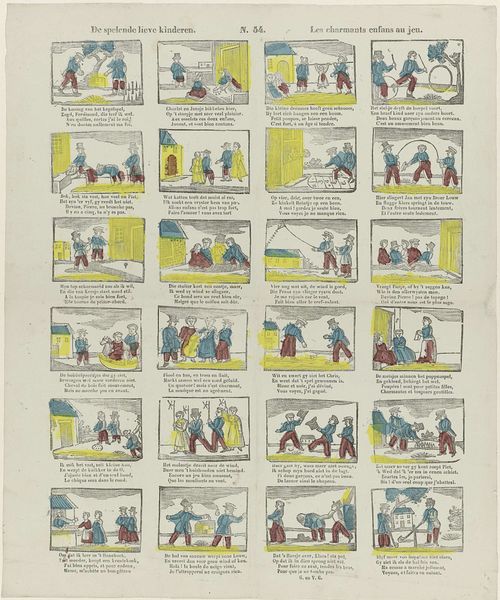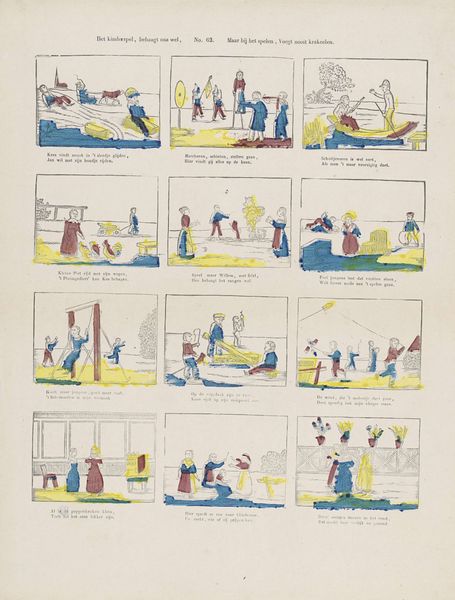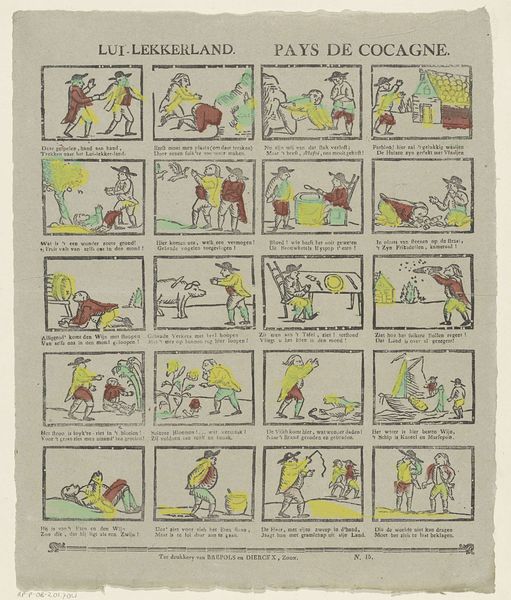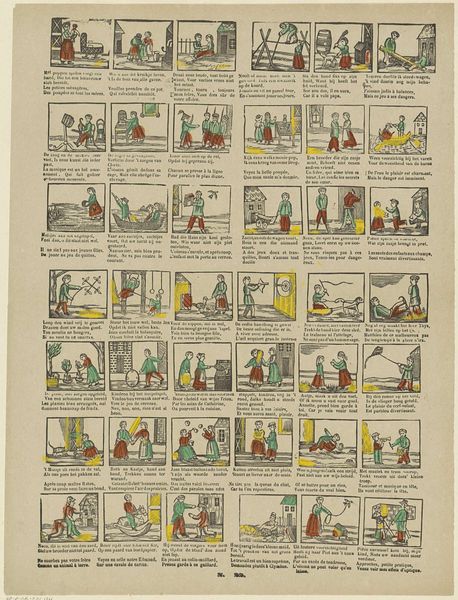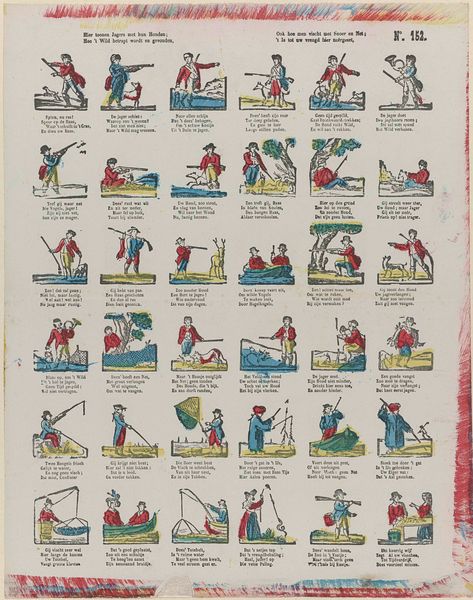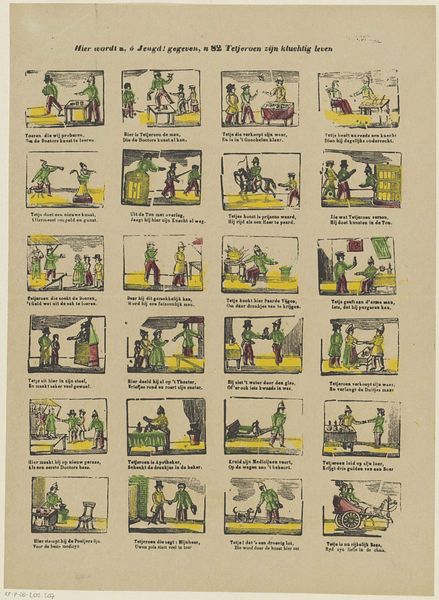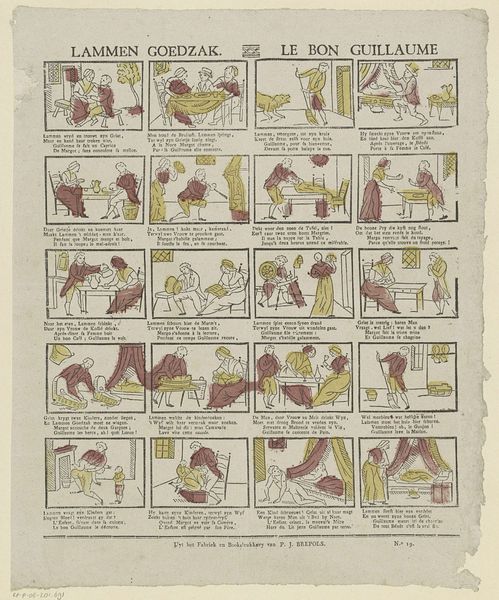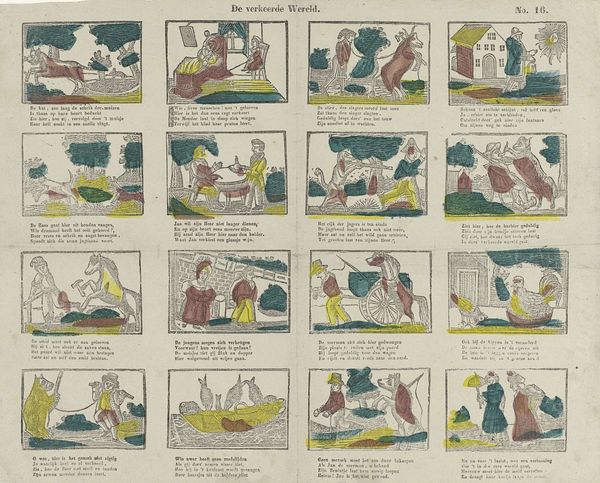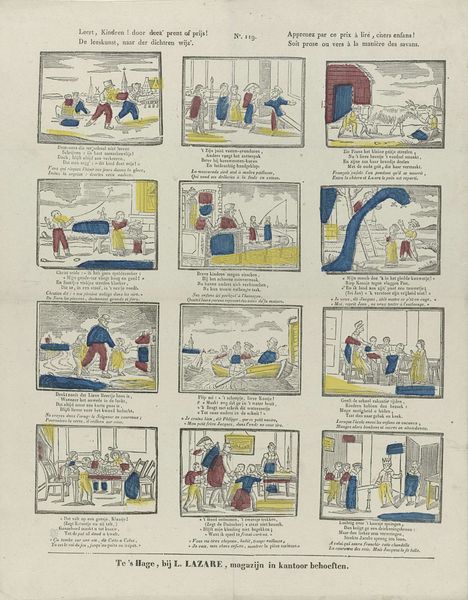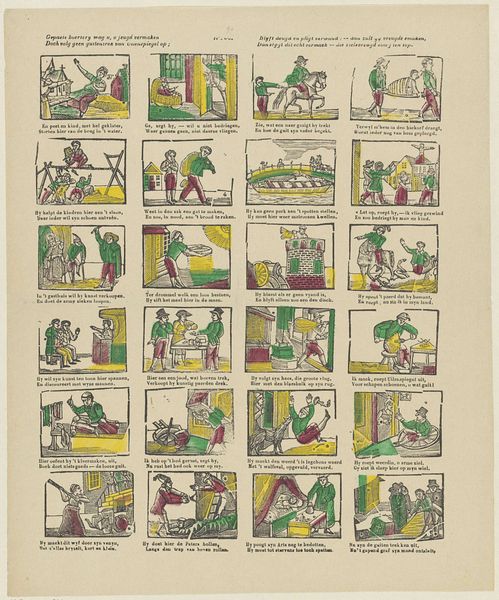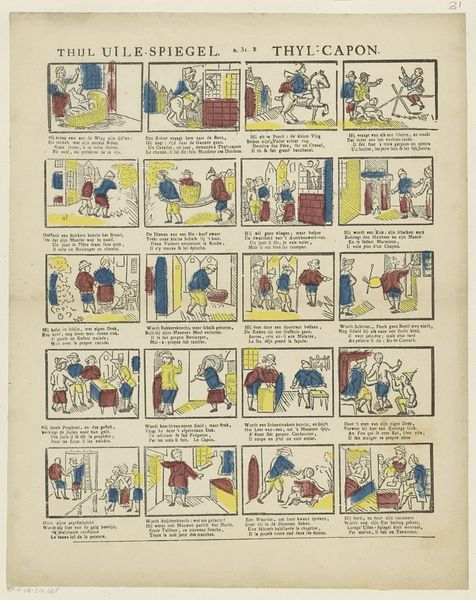
print, etching, ink, woodcut, pen
#
comic strip sketch
#
quirky sketch
#
narrative-art
#
dutch-golden-age
# print
#
etching
#
sketch book
#
personal sketchbook
#
ink
#
idea generation sketch
#
sketchwork
#
journal
#
woodcut
#
comic
#
sketchbook drawing
#
pen
#
genre-painting
#
storyboard and sketchbook work
#
sketchbook art
Dimensions: height 386 mm, width 315 mm
Copyright: Rijks Museum: Open Domain
Curator: What strikes me immediately about this print, “Kinderspelen,” dating from between 1848 and 1881 and housed right here at the Rijksmuseum, is its childlike quality. It’s made using etching, ink, and woodcut methods and evokes children's games in little vignettes. There’s a storybook feeling here. Editor: Absolutely. It’s almost…dreamlike, in a faintly unsettling way. There is a very slight cartoonish style to this collection of images which seems so sweet. It has to do with those soft hues against such strong lines. Do you get that kind of uncanny feeling too? Curator: Uncanny, maybe not initially, but I see what you mean. These are innocent games – skipping rope, riding a hobby horse, playing on a seesaw – but they're rendered in a style that stops short of being classically comforting. Think of the long cultural history of the archetype of a "game," or playful competitions, as serious mimetic rituals for growing into adulthood, full of social and competitive stakes. Editor: So the slight disquiet comes from a knowledge in the back of our heads, the way fairy tales prepare children for difficult lives? The illustrations are simplified to almost a primitive style and paired with a short text in each cell to move this narrative along... what do you make of the verses below the illustrations? Are these common rhymes of that time? Curator: More likely specific rhymes Lutkie & Cranenburg composed for each little scene to add to the playfulness. They are not very sophisticated doggerels which in my opinion, are more comical than serious, if you read Dutch. They definitely emphasize how central games are in child development by literally spelling out instructions, as adults in children’s lives are want to do. Games also had, in traditional times, more social importance. Think how match-making would occur during circle games with a blindfolded child in the center! Editor: Well, looking at it from today’s vantage, what once was play and entertainment, or instruction as you mentioned, is now archival history that gives a strong taste of Dutch childhood long ago. Curator: A bittersweet nostalgia, then? I will consider that when revisiting this playful document.
Comments
No comments
Be the first to comment and join the conversation on the ultimate creative platform.

